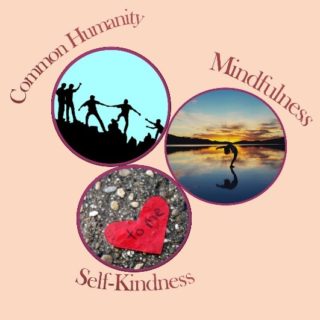In Part 1 of this series, we looked at the effectiveness of weight loss programs and diets by people who feel fat and want to lose weight. We concluded that losing weight is not the solution. Even after losing weight, guilt, deprivation and “feeling fat” can persist. The solution is to acquire the skills to control when you start eating and when you stop eating.
In Part II of this series, we will start by looking at what it is that starts and stops us from eating – the determinants of eating behaviour – and why it is that we have to eat in the first place. We will discover that “the real problem” has nothing to do with willpower.
PART II: WHAT IS HUNGER?
We use the term ‘hunger’ all the time. But what is hunger? Have you ever spent any time thinking about it? Put yourself in the position of a scientist who wants to discover and understand what hunger is. Is hunger simply a feeling? Where does this feeling come from? Is it always related to a true state of need? If so, are overweight people experiencing a feeling of hunger when they are driven to eat? They certainly are not in a state of need. Is hunger a primitive instinct with which we are all born? Is it identical for all of us? Is it a feeling that is always the same and is related to specific physiological events (e.g. stomach contractions)? Or is hunger something that we may learn? Is hunger different for different people? Are there different types of feelings that we tend to call hunger? Do different people call different feelings hunger? What is it? What causes it? What effects it? How do you know what someone else calls hunger is the same as what you call hunger? Does it even exist as a simple singular well-defined entity? How do you know it exists? Have you ever seen it?
Hunger is a concept. It is a notion that has been invented by human beings. Although we commonly use the term and we have feelings we often label as hunger, it is not something which is a simple fact, in that it is not directly observable by others and we are uncertain what others mean or feel when they say they are hungry.
HUNGER is a term we use to explain that which starts or ‘drives’ people to start eating. Generally, it is a notion or concept that refers to a need state which results in a motivation or drive.
SATIETY is something which is rarely talked about, but is probably more important than the concept of hunger. Satiety is the ‘drive’ state that stops or actively inhibits people from eating. As you will discover, satiety is probably more important than hunger in the control of eating behaviour.
First, let’s begin at the beginning – the basics. Let’s look at some simple biological principles and facts.
Life – what is it? It is all those millions of chemical reactions that take place in living cells that we call life. Most people do not appreciate the fact that these chemical reactions – life – can only exist under a very narrow set of conditions. Think about it.
The sea is the best example of the conditions necessary for life to survive. This was described a century ago by the French physiologist, Claude Bernard. Life cannot survive much outside the boundaries of a sea environment. Life requires a very delicate balance of electrolytes (various chemical salts in water) and if balance changes only slightly, life cannot survive. That is why, for example, salt amongst other things is used as a preservative because it prevents all forms of life including bacteria. The balance of various salts to water in the sea is that necessary for all forms of life. The range of temperature is also critical and again best described by the sea environment. Look at the range of temperature in the sea.
It obviously does not get colder than the freezing point of water, and it clearly does not become extraordinarily hot. Don’t confuse this with the temperatures that occur outside of our bodies. If our internal body temperature (where chemical reactions of life take place) changes only a few degrees from normal (e.g. a fever), our lives hang in a critical balance. Our temperature cannot fluctuate like the outside temperature fluctuates. Life exists within a very narrow range. There are many other factors and conditions necessary for life including energy balances, the presence and absence of different chemicals (e.g. waste product in the form of nitrogen and urea which must be eliminated) and so on.
But what of animals and organisms that do not live in the sea? They have to take the sea environment with them and maintain it within the critical boundaries of life or they will not survive. So even though temperatures are ranging from well below freezing to well above critical fever level in the outside environment, these organisms must maintain their internal environment like the sea. They must have systems for getting rid of waste products and maintaining salt water balances. They must have systems for maintaining the critical chemicals required for life.
Claude Bernard termed this internal environment – the internal sea environment which land animals have – the ‘INTERMAL MILIEU”[1].
The Internal Milieu pertains to the very delicate and narrow set of conditions which are required for life to survive. All living organisms must maintain this very carefully and very accurately or they simply will not survive. Few people think about this very much and fail to realize how narrow and delicate the range of conditions are.
But how is this internal environment maintained? Obviously, we must have some kind of a mechanism or process which allows us to maintain the delicate balance of all those conditions necessary for life to survive. The process by which this is maintained is called Homeostasis. “Homeostasis”, a term coined by the great physiologist Walter Cannon, MD Sc.D., of Harvard University. In his famous book, The Wisdom of the Body (1932, W.W. Norton Publishers), Dr. Cannon explained how, regardless of conditions that may vary widely, the “bodywisdom” works constantly to maintain homeostasis.
So, homeostasis is the process by which our bodies maintain this critical balance that is complicated, delicate, and vital for the survival of life. The range of conditions in which we can move is much narrower than most people think. It is critical that the balance is guarded very, very carefully and very accurately.
So what role does eating behaviour and food play in homeostasis and maintaining life? Let us begin by looking at why we eat in the first place. Why do we need food? What does life require that food supplies?
1. Essential building blocks for growth and repair
A major reason we have to eat is to supply the various chemicals needed for the biological reactions within our body. Our body has a structure which requires building blocks. As we are growing we need to supply these building blocks and later we need to repair or replace damaged or continuously changing structures. We are constantly growing new skin to replace the surface skin which naturally dies and is replaced. You are probably familiar with many of these needed building blocks such as the vitamins, minerals, and proteins. This will be discussed later under Nutrition. The important point is that we need to eat to supply ourselves with the building blocks required for growth and repair that are essential for life.
2. Energy (calories)
The second important reason that we require food is for energy. Energy is measured in calories. One calorie is the amount of energy that is required to heat up one millilitre of water one centigrade degree. The commonly used term ‘calorie’ to describe the amount of energy in food is really a thousand of these calories. It is really a kilocalorie. In other words, the calorie (kilocalorie) that you eat is enough energy to heat up one litre of water one centigrade degree.
Why do we need energy? Energy is essential for life and is the fuel that is required for the following:
- Movement and work – muscles and glands;
Everything that we do requires energy. All the work that our muscles do requires energy and the amount of energy varies with the amount of work. Our glands require energy. We sweat and shed tears just to clean our eyes. All this requires energy. Obviously the amount of work that our muscles and glands do varies from time to time considerably.
As mentioned earlier, maintaining temperature is critical for the survival of life. Heat is a form of energy and is needed to maintain temperature. In cool environments we require energy to produce heat, while in very hot environments we require energy to allow our glands to generate sweat and keep us cool.
- Metabolism – catabolism, anabolism;
Metabolism is a term that refers to the biochemical processes necessary to maintain life. It is the breaking down (catabolism) and building up (anabolism) of the various chemicals and structures needed for life. All of these chemical reactions which take place in our body require energy. Often, the term ‘basal metabolic rate’ refers to the minimal amount of fuel that is required just to keep the chemical reactions going. This in fact, requires a considerable amount of energy.
In summary, energy is critical for our survival. We need it for movement and work, for temperature regulation and heat, and for metabolism to fuel all the activities of our body needed for the existence of life.
The balance of energy is very delicate and very critical. Obviously, the amount of energy we use from time to time and day to day varies considerably. Some days we are doing a considerable amount of work and carrying heavy loads, walking long distances for long durations, while on other days our activities may be drastically reduced. Similarly, we may be in a very cold environment requiring a great deal of heat energy an on other days require very little energy for heat maintenance. Therefore, the amount of energy you use from day to day varies considerably.
What happens if we take in more energy through eating than we use up? What happens if our input is greater than our output? You gain weight. When energy input exceeds energy output, the energy can be stored in the form of fat and our metabolism shifts to produce more fat and stores it. Consequently, there is a net weight gain.
What happens if we take in less energy through eating than we use up? You lose weight. When your body requires more energy than can be obtained through input by eating, the energy that is stored in the form of fat is then converted and used to meet the body’s needs. In more extreme cases or with extremely rapid changes, energy can be obtained from other tissue types including protein as well. This can have detrimental effects on your body.
Weight, therefore, is simply an index of how well the balance of energy is being maintained – whether input is balancing output. If you use up more than you take in, you lose weight; if you take in more than you use up, you gain weight. It is as simple as that.
Most people know this. But do they realize how delicate the balance is? The balance is so delicate that if you took in only 1% more energy than you used up, you would probably gain over 50lbs in a year!
In summary, it is quite clear that the balance needed for the existence of life is extremely ‘delicate’ and that the control of this balance is simply too important to be left to conscious control. To think that humans regulate their weight and their food intake by consciously thinking about it and making calculated decisions, is simply absurd. It is important to keep these things in perspective.
In Part III of this series, we will look at the extremely complex internal mechanism that regulates our eating behaviour.

[1] Gross, C. G. (1998, September). Claude Bernard and the constancy of the internal environment. Neuroscientist, 4(5): 380-385. DOI: 10.1177/107385849800400520









 get back to work, primarily because this notion and conditioned belief that their symptoms and work cannot co-exist has been carved into their minds. The earlier clients are referred to us, the better results we see. If we see clients at the point that they go off work, or even when they are still working but are having challenges, we can work with them to learn how to manage and cope with their difficulties in such a way that they do not have to give up a pivotal part of their life. We can provide strategies to manage their difficulties while AT WORK, and can teach them how to address and deal with issues as they arise. Furthermore, we can help them identify the value that their work brings to their life. Even if someone does not go into work every day thinking I LOVE MY JOB, we can often still help them identify what it is about working that is meaningful to them – whether it is financial security, status, sense of accomplishment, financial contribution within the family, setting an example for their children, the ability to live a comfortable lifestyle, or the means to keep their family healthy – there is rarely an empty response. From there, the client may notice that in being off work, they are moving away from that value rather than towards it, which is causing additional suffering to their already quite full plate of difficulties.
get back to work, primarily because this notion and conditioned belief that their symptoms and work cannot co-exist has been carved into their minds. The earlier clients are referred to us, the better results we see. If we see clients at the point that they go off work, or even when they are still working but are having challenges, we can work with them to learn how to manage and cope with their difficulties in such a way that they do not have to give up a pivotal part of their life. We can provide strategies to manage their difficulties while AT WORK, and can teach them how to address and deal with issues as they arise. Furthermore, we can help them identify the value that their work brings to their life. Even if someone does not go into work every day thinking I LOVE MY JOB, we can often still help them identify what it is about working that is meaningful to them – whether it is financial security, status, sense of accomplishment, financial contribution within the family, setting an example for their children, the ability to live a comfortable lifestyle, or the means to keep their family healthy – there is rarely an empty response. From there, the client may notice that in being off work, they are moving away from that value rather than towards it, which is causing additional suffering to their already quite full plate of difficulties.



